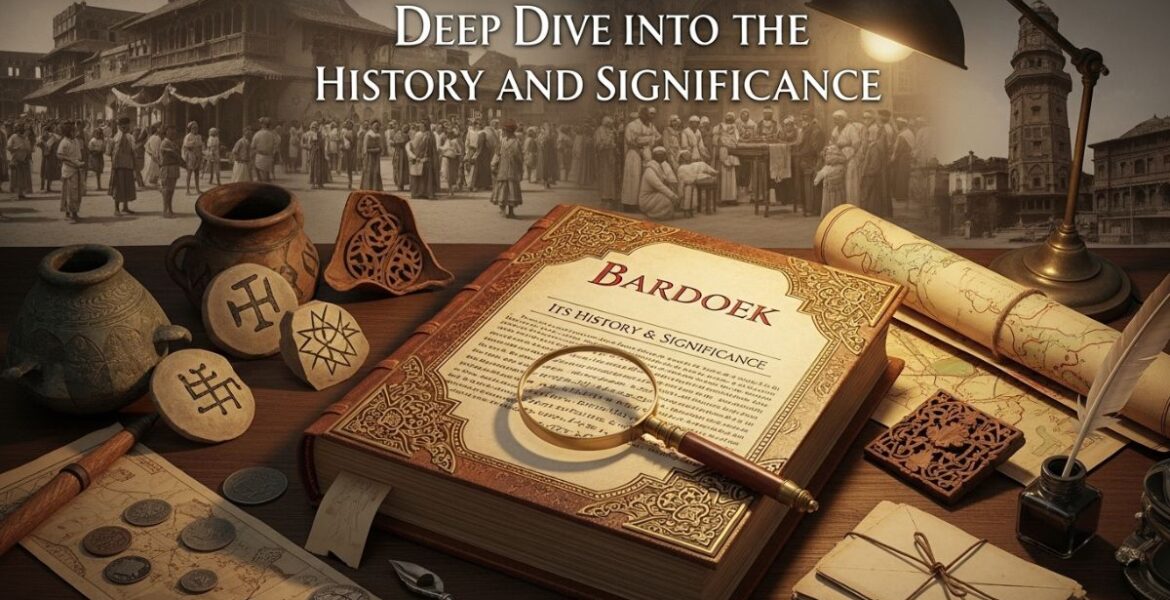Exploring bardoek: A Deep Dive into Its History and Significance

Bardoek is more than just a fabric; it’s a vibrant thread woven into the cultural tapestry of history. Originating from various traditions, bardoek has captured the hearts and minds of many through its unique patterns and rich symbolism. As we dive deeper into its past, present, and future, you’ll discover why this remarkable textile continues to hold significance today. Whether you’re an enthusiast or simply curious about different cultures, let’s embark on an enlightening journey exploring all that bardoeks has to offer!
The Role of Bardoek in Traditional Culture
Bardoek holds a vital place in traditional culture, serving as more than just an object. This unique item often embodies the spirit of community and familial ties.
In many cultures, bardoek is used during significant ceremonies and rituals. Its presence enhances these events, turning moments into lasting memories. Families pass down their bardoeks from generation to generation, each layer telling a story or preserving traditions.
Craftsmanship plays a crucial role too; artisans dedicate time to creating intricate designs that reflect cultural heritage. Every stitch represents not only skill but also a connection to ancestry.
Moreover, bardoek fosters social bonds among people who share similar customs. Whether it’s wrapped around shoulders at gatherings or displayed prominently in homes, it symbolizes unity and pride within communities while celebrating shared histories through its vibrant patterns and textures.
Modern Adaptations and Uses of Bardoek
Bardoek has evolved beyond its traditional roots, finding new expressions in contemporary society. Artists and designers have embraced it as a canvas for innovative creations. From fashion to home décor, bardoek is woven into textiles that tell stories of culture and identity.
In culinary circles, chefs are reimagining bardoeks role. It serves not only as an ingredient but also as inspiration for dishes that blend tradition with modern gastronomy. Diners savor the rich flavors while appreciating the heritage behind each bite.
The digital age has further transformed how people connect with bardoeks. Social media platforms showcase vibrant images and narratives surrounding this cultural artifact. Virtual workshops invite enthusiasts worldwide to learn about crafting techniques and their significance.
These modern adaptations breathe fresh life into bardoeks, ensuring its relevance in today’s fast-paced world while honoring its storied past.
Controversies Surrounding Bardoek
Bardoek has not been without its share of controversies. As its popularity grows, so does the debate surrounding its cultural appropriation. Many argue that modern adaptations dilute its original significance and essence.
Critics point out that commercialization can strip bardoek of its traditional values. This raises questions about authenticity and respect for heritage. There are voices in the community who feel overshadowed by corporate interests.
Additionally, some rituals associated with bardoeks face scrutiny regarding ethical practices. These discussions emphasize a need for sensitivity when engaging with such deep-rooted traditions.
Social media also amplifies these debates, bringing varied opinions to light. Advocates strive to uphold bardoeks integrity while embracing change, but finding common ground remains challenging. The dialogue continues as enthusiasts navigate this complex landscape.
How to Experience Bardoek for Yourself
To experience bardoek, start by immersing yourself in local culture. Visit community events where traditional practices are showcased. Engaging with artisans can provide deeper insights into its significance.
Consider attending a workshop focused on the creation or use of bardoek. Here, you’ll learn not only techniques but also the stories that shape this rich tradition.
Exploring online platforms dedicated to cultural heritage can reveal virtual experiences and discussions about bardoek. These resources often highlight personal anecdotes and interpretations from different perspectives.
Don’t forget to taste authentic dishes that incorporate bardoek’s essence, whether through flavors or presentation. Food is a powerful way to connect with any culture.
Open your mind and heart during your journey with bardoek; it’s not merely an object but a living narrative waiting for exploration.
Conclusion:
The journey through the history and significance of bardoek reveals a rich tapestry of cultural heritage. From its roots in traditional practices to its modern adaptations, bardoek continues to inspire curiosity and respect. While controversies add layers of complexity, they also highlight the diverse perspectives surrounding this unique element.
For those eager to immerse themselves in the experience, exploring bardoek can be both enlightening and rewarding. Whether participating in traditional ceremonies or engaging with contemporary interpretations, there’s much to discover.
You may also like

The Fascinating World of qawerdehidom: A Comprehensive Guide

Exploring sankkucomplex: The Intersection of Culture and Creativity

Leave a Reply